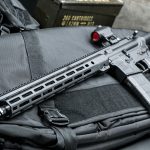Sears Holdings Corp plans to close between 100 and 120 Sears and Kmart stores after poor sales during the holidays, the most crucial time of year for retailers. In an internal memo Tuesday to employees, CEO and President Lou D'Ambrosio said that the retailer had not “generated the results we were seeking during the holiday.”
Sears provided an update on its quarter-to-date performance and announced that it planned actions to improve and accelerate the transformation of its business. The company said that quarterly comparable stores sales fell 5.2 percent, while yearly comparable store sales declined 2.6 percent.
Comparable store sales for the eight-week (“QTD”) and year-to-date (“YTD”) periods ended December 25, 2011 for its Kmart and Sears stores are as follows:
Kmart QTD: -4.4%
Kmart YTD: -1.8%
Sears Domestic QTD: -6.0%
Sears Domestic YTD: -3.3%
Total QTD: -5.2%
Total YTD: -2.6%
Kmart's quarter-to-date comparable store sales decline reflects decreases in the consumer electronics and apparel categories and lower layaway sales. Sears Domestic's quarter-to-date sales decline was primarily driven by the consumer electronics and home appliance categories, with more than half of the decline in Sears Domestic occurring in consumer electronics. Sears apparel sales were flat and Lands' End in Sears stores was up mid-single digits.
The combination of lower sales and continued margin pressure coupled with expense increases led to a decline in the company's Adjusted EBITDA. Accordingly, Sears expects that its fourth quarter consolidated Adjusted EBITDA will be less than half of last year's amount. For reference, the company generated $933 million of Adjusted EBITDA in the fourth quarter ($795 million domestically and $138 million in Canada).
Due to the company's performance in 2011, Sears expects it will record a non-cash charge related to a valuation allowance on certain deferred tax assets of $1.6 to $1.8 billion in the fourth quarter. Although a valuation adjustment is recognized on these deferred tax assets, no economic loss has occurred as the underlying net operating loss carryforwards and other tax benefits remain available to reduce future taxes to the extent income is generated. Further, the company recognizes an impairment charge on some goodwill balances for as much as $0.6 billion in the fourth quarter an impairment charge on some goodwill balances for as much as $0.6 billion. These charges would be non-cash and combined are estimated to be between $1.6 and $2.4 billion.
“Given our performance and the difficult economic environment, especially for big-ticket items, we intend to implement a series of actions to reduce on-going expenses, adjust our asset base, and accelerate the transformation of our business model. These actions will better enable us to focus our investments on serving our customers and members through integrated retail – at the store, online and in the home,” said D'Ambrosio.
Specific actions which Sears plans to take include:
- Close 100 to 120 Kmart and Sears Full-line stores. Store closures are expected to generate $140 to $170 million of cash as the net inventory in these stores is sold and cash proceeds from the sale or sublease of the related real estate is expected to be generated. Further, the company intends to optimize the space allocation based on category performance in certain stores. Final determination of the stores to be closed has not yet been made. The list of stores closing will be posted at www.searsmedia.com when final determination is made.
- Excluding the effect of store closures, Sears expects to reduce 2012 peak domestic inventory by $300 million from the 2011 level of $10.2 billion at the end of the third quarter as a result of cost decreases in apparel, tighter buys and a lower inventory position at the beginning of the fiscal year.
- Focus on improving gross profit dollars through better inventory management and more targeted pricing and promotion.
- Reduce fixed costs by $100 to $200 million.
In addition to the specific store closures listed above, Sears will carefully evaluate store performance going forward and act opportunistically to recognize value from poor performing stores as circumstances allow. While past practice for Sears has been to keep marginally performing stores open while the company worked to improve performance, Sears said it no longer believes that to be the appropriate action in this environment. The company intends to accentuate its focus and resources to its better performing stores with the goal of converting their customer experience into a world-class integrated retail experience.
Sears currently expects the store closure and inventory reduction actions to reduce peak inventory in 2012 by $500 to $580 million and reduce its peak borrowing need by $300 to $350 million in 2012 from levels that may have resulted in 2012 without such actions.
At December 23rd, Sears had $483 million of borrowings outstanding on our domestic revolving credit facility leaving the company with over $2.9 billion of availability on its revolving credit facilities ($2.1 billion on our domestic facility and $0.8 billion on our Canadian facility). There were no borrowings outstanding last year at this time.
During the fourth quarter through December 23, 2011, Sears has not repurchased any of its common shares under its share repurchase program. As of December 23, 2011, the company had remaining authorization to repurchase $524 million of common shares under the previously approved programs.















